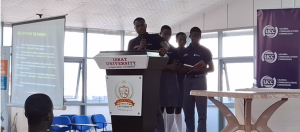Unit 2: Research & Problem Validation
Introduction: Stepping Out of the Lab
In the last lesson, you acted like a detective, using online tools to find clues about a problem. But an even more powerful tool is talking to the people who actually have the problem. This is called **user validation**, and it’s the most important part of the research phase. It’s the difference between guessing what people need and knowing for sure.
There are two main ways to talk to users:
Interviews: For getting deep, qualitative insights from a few people.
Surveys: For getting broad, quantitative data from many people.
Part 1: The Art of the User Interview
User interviews are conversations with people who you think have the problem you’re trying to solve. The goal is to understand their experiences, feelings, and behaviors.
How to Conduct a Great Interview
Ask Open-Ended Questions: Avoid questions that can be answered with a simple “yes” or “no.” Instead of “Do you have trouble finding parking?” ask, “Tell me about a time you tried to find a parking spot and had trouble.”
Listen More, Talk Less: Your job is to listen and learn, not to sell your idea. The more they talk, the more valuable insights you’ll get.
Don’t Lead the Witness: Don’t suggest solutions. If your idea is an app, don’t say, “Would you use an app to solve this?” Instead, ask, “How do you currently deal with this problem?”
Listen for Pain Points: Pay attention to their frustrations, the things they complain about. These are the core problems you need to solve.
Activity: Question Transformer
A good interview starts with a good question. Transform the “bad” closed-ended questions below into powerful, open-ended questions that will get people to share their experiences.
Bad Question:
“Do you like recycling?”
Bad Question:
“Would you use a new homework app?”
Part 2: The Power of the Survey
Surveys are great when you want to get a quick answer from a large group of people. They can help you confirm if the insights you got from your interviews are common problems for many people.
Tips for Creating an Effective Survey
Keep it Short: People have short attention spans. Keep your survey to 5-10 questions at most.
Use Clear Language: Use simple, unambiguous questions. Don’t use jargon.
Mix Question Types: Use multiple-choice for easy data analysis (“How often do you…”) and a few open-ended questions at the end to get new ideas (“What is your biggest frustration with…”).
Looking Ahead
After conducting your interviews and surveys, you will have a ton of valuable information. The next step is to synthesize this data and clearly define your final core idea. This is what you’ll learn in **Lesson 3: Defining Your Core Idea & UVP**.





